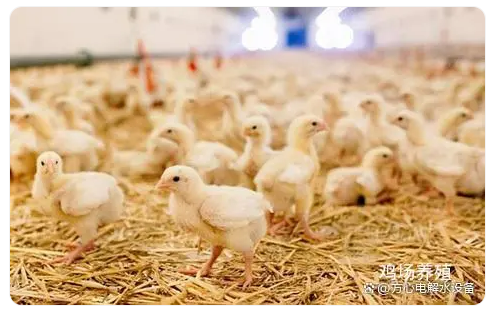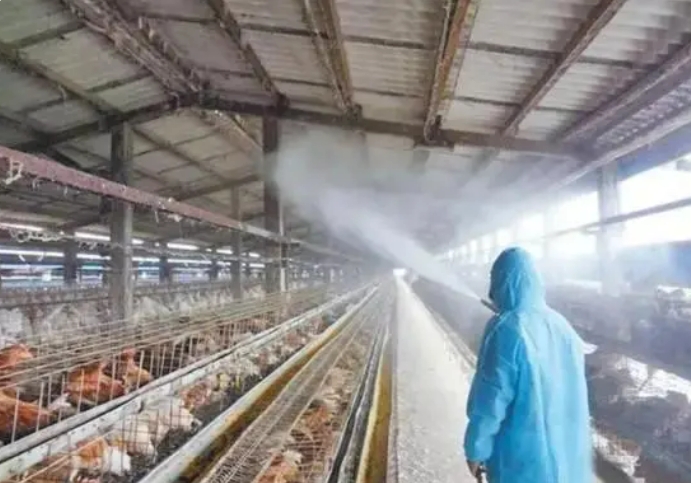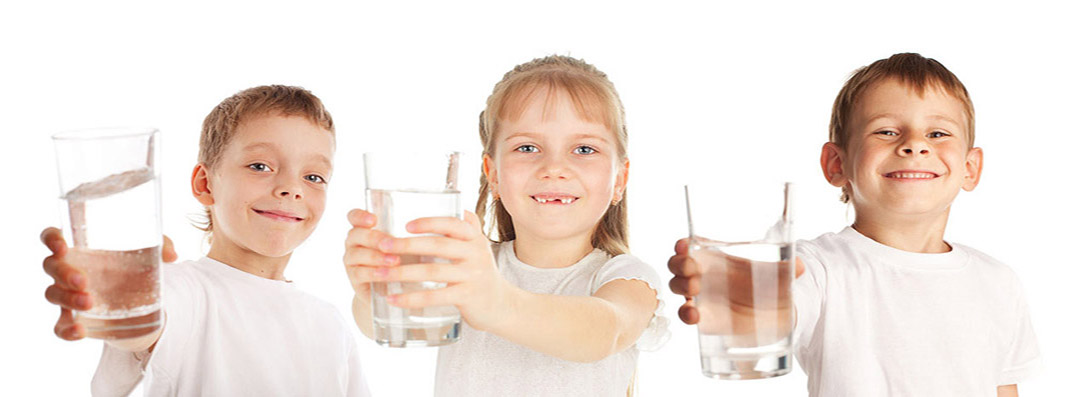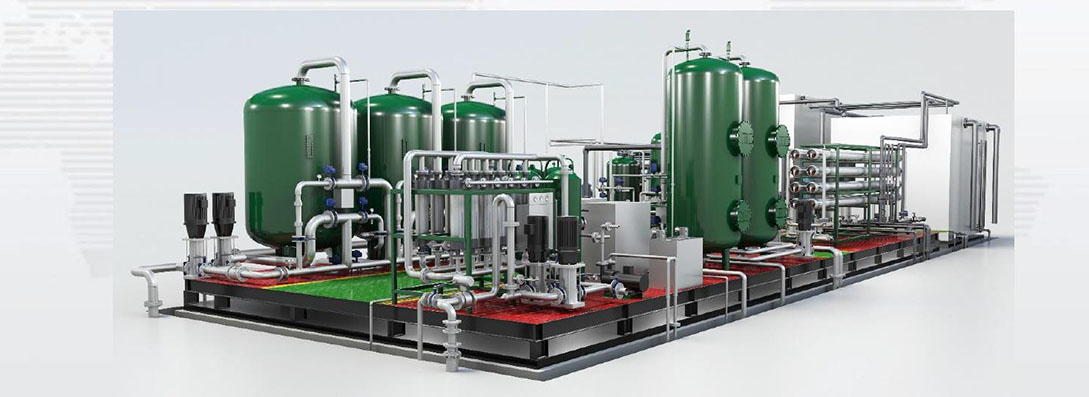Application of hypochlorous acid spray disinfection in poultry chicken breeding

Slightly acidic electrolyzed water (hypochlorous acid water) has the characteristics of high efficiency, broad spectrum, safety, no pollution, no residue, etc. It does no harm to animal and human health, and has broad application prospects in agriculture, food, medical and health industries. A large number of research results show that slightly acidic electrolyzed water (hypochlorous acid water) can effectively kill various microorganisms in the air and on object surfaces, including E. coli, salmonella, Staphylococcus aureus, yeast, mold and viruses.
The principle of hypochlorous acid disinfection and deodorization
At present, eight substances specified in my country's odor pollutant emission standards include ammonia, trimethylamine, hydrogen sulfide, methyl mercaptan, methyl sulfide, dimethyl disulfide, carbon disulfide and styrene. In livestock and poultry breeding houses, the odor is mainly NH3. Hypochlorous acid is used for deodorization. The reaction principle is as follows: NH3+HClO→NH2Cl+H2O. The main disinfection methods are flushing, soaking or high-pressure spray, which can fundamentally remove odors and are non-toxic and non-irritating. In production, the chemical equilibrium can be moved to the right by increasing the H+ concentration, etc., and further reducing the NH3 concentration. The valence of the Cl element in HClO is +1, and the stable valence state of the Cl element is -1, so it has strong oxidizing properties. HClO easily penetrates the cell wall and can damage the cell membrane, causing bacteria and other microorganisms to release nucleic acids (DNA, RNA), proteins, organelles, etc., and affects a variety of biological enzyme systems (such as -SH of glucose phosphate dehydrogenase is oxidized and destroyed) normal function, and then achieve the purpose of disinfecting.
Practical application of hypochlorous acid spray disinfection in broiler breeding:
① Cooling and humidification
Spray cooling is mainly suitable for situations where the chicken house is in a high temperature state due to high temperature weather or due to design defects. The wet curtain device cannot achieve effective humidification, causing the chicken house to be in a high temperature state. The chickens are young and cannot be cooled by a wet curtain. Using spray cooling can achieve good results in a short time. Spray for 10 to 20 seconds with an interval of 3 to 5 minutes to ensure that the chickens will not get cold due to wet feathers, and the litter will not be wet due to moisture falling to the ground. This can effectively reduce the overall heat radiation and heat radiation on the roof of the chicken house. The effect of the chicken's own heat dissipation. At the same time, for chicken houses where the mist line is higher than the ground, spray for 1 minute with a cycle of 3 to 4 minutes. Reduce the heat radiation from the roof and use the rising principle of hot air to take away the heat from the bottom, effectively reducing the base temperature of the chicken house.
 ② Disinfect before picking up chickens
② Disinfect before picking up chickens
The traditional disinfection method is to use high-pressure water guns and foam to spray glutaraldehyde and quaternary ammonium salts.
Disadvantages of spray disinfection: ① Manual disinfection of chicken houses requires wearing a gas mask, which is inconvenient to operate. ② It is difficult to separate humans and electricity, which poses safety risks. ③The amount of water and medicine used is large, resulting in waste. ④ There are blind spots in the disinfection of the top of the chicken house and the gaps between mechanical equipment and facilities.
Advantages of spray disinfection: ① The amount of disinfectant used is only 50% of spray disinfection, which greatly reduces the cost of medication. ②Easy to operate and save labor costs. ③No safety hazard. ④Save water. The water consumption for spray disinfection is 1/10 of that for spray disinfection. ⑤No dead ends for disinfection.
③ Disinfection with chickens
Choosing the spray method according to the age can not only reduce the pathogenic microorganisms inside the chicken house, but also reduce the dust in the chicken house. Among them, from 1 to 14 days, spray 1 minute/time × 2 times/day; from 15 to 28 days, spray 1 minute/time × 3 times/day, with an interval of 8 hours each time; from 29 days to slaughter, spray 2 minutes/time ×2 times/day.
Advantages of hypochlorous acid spray belt disinfection method for livestock and poultry:
Research shows that strict disinfection can reduce the incidence of disease in farms by 80%. Doing a good job in disinfection can bring greater economic benefits to the safe production of farms. Using hypochlorous acid spray to disinfect livestock and poultry has the following advantages:
① It can effectively kill pathogenic microorganisms attached to the air, environment and body surface of livestock and poultry houses, thereby effectively preventing livestock and poultry breeding diseases without irritating the respiratory tract of livestock and poultry.
② Disinfect vehicles, personnel and the environment, including disinfecting body surfaces, soles, hands, vehicles, etc. Kill pathogens in the air on the surfaces of livestock and poultry, on the ground, on roofs, walls, etc., to prevent respiratory diseases of livestock and poultry and to control droplet-borne diseases.
③It can effectively reduce the NH3 concentration in livestock and poultry rooms, reduce odor, and prevent heatstroke and cooling.
④ In terms of disinfection of drinking water for livestock and poultry, there is a large amount of biofilm on the inner walls of the pipes in the farm water supply system and livestock ponds, which breeds bacteria and blocks the water lines, affecting normal drinking water and causing livestock and poultry to suffer from various diseases. Hypochlorous acid water can pass through the cell membrane from the inside Carry out oxidative killing and make the biofilm fall off, inhibit the regeneration of biofilm, and have high efficiency and broad spectrum.
⑤Green and safe, with significant economic benefits.
Application
Contact Us

Name: Diana
E-mail: [email protected]
Skype: +86-15-22-27-71-011
WeChat: +8615222771011
Whatsapp: +8615222771011
Add: Office N.420D-C1 Tower Ajman,UAE









 Skype Chat
Skype Chat WhatsApp
WhatsApp  Mail inquiry
Mail inquiry
